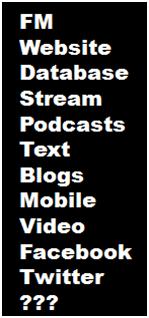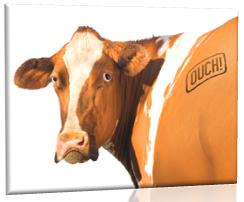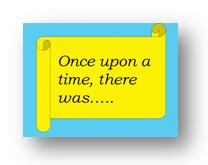The digital and social tools available to every brand – from a local fitness studio to a hometown restaurant group to any radio station – provide marketers with an infinite array of possibilities. Most of them are actually free, but don’t let the lack of an entry fee lull you into thinking that it is easy to seamlessly and proficiently master them.
 And as we also know, too many options can lead to decision stress and the inability to deploy them wisely. Oftentimes, brands struggle because they have not thought through how new assets can be applied to venerable, traditional stations.
And as we also know, too many options can lead to decision stress and the inability to deploy them wisely. Oftentimes, brands struggle because they have not thought through how new assets can be applied to venerable, traditional stations.
And pity the poor program director. I was one of these people three decades ago, and believe me, I had my hands full programming just one station in a competitive radio market.
Today, we often show the list on the left as part of our digital strategy presentations because it illustrates the progression of outlets that have come along in just the past 10-15 years, all of which demand time and attention.
It wasn’t that long ago when the mark of a successful PD was getting competitive ratings based on the sound of the station. Over just the last few years, the bar has been raised – a lot. The need to understand and develop proficiency with these new digital and social tools has become a difficult challenge.
In almost every case, programmers, marketers, and managers have had to employ tactics – often on the fly – to determine practical application strategies.
Forget so-called “best practices” – there aren’t any when you first encounter Pinterest, face declining email open rates, or wonder why DJ posts on Facebook are often inconsistent or off-message.
 I frequently mention Seth Godin’s Meatball Sundae as a strategic starting point. But it goes beyond that because ill-defined brands suffer when they try to make use of the digital arsenal.
I frequently mention Seth Godin’s Meatball Sundae as a strategic starting point. But it goes beyond that because ill-defined brands suffer when they try to make use of the digital arsenal.
Branding isn’t easy, it isn’t pretty, and it’s hard work. But if your goal is to truly harness available digital resources, the need to go back to Square One is essential.
So when I ran across Sarah Evans’ recent article “The Next Women” about branding, it caught my attention. “Eight Steps to Developing A Company Brand Your Customers Will Love” is a title that has become cliché-sounding on Twitter. But to lump Evans’ article in with all the other drivel about social media is to ignore a guide that is worthy of your team’s time. If you can address some of Evans’ key points, then much of the rest of the task of using digital tool kits will become easier and obvious.
I won’t walk you through the entire list, but there are a number of items that resonated with me when I thought of radio stations that require some branding rehab.
2. Define your values. While most radio operators can easily tell you what they do, many cannot articulate why they do it. This harkens back to a Simon Sinek TEDx video we featured last year in this blog. It’s not about what you do; it’s why you do it. Is your station about new music discovery, is it about informing your community, is it about glorifying male attitudes and lifestyles – or something else altogether? It is difficult, if not impossible, to speak in one voice, if everyone is saying something different.
3. Be different. Playing one more ‘80s track an hour is not a viable difference. Based on what you are and why you are, there ought to be a definable difference between brands. Apple and Best Buy each sell computers, but their brands could not be more different from one another. Same with Starbucks and Dunkin’ Donuts. All four of these companies enjoy success, but they achieve their goals by having strong brand definitions.
6. Tell a st ory. “Today’s County Favorites” or “Favorites of the ‘80s, ‘90s, & Now” may describe what you do, but they don’t provide what Evans says is enabling “customers to relate to your business.” What is your brand’s storyline? Because when you develop one, it makes it easy for consumers to tell it to others and pass it along. You’ve all heard respondents botch your brand’s timeline and history in focus groups. Give them a good story, and they’ll spread the word.
ory. “Today’s County Favorites” or “Favorites of the ‘80s, ‘90s, & Now” may describe what you do, but they don’t provide what Evans says is enabling “customers to relate to your business.” What is your brand’s storyline? Because when you develop one, it makes it easy for consumers to tell it to others and pass it along. You’ve all heard respondents botch your brand’s timeline and history in focus groups. Give them a good story, and they’ll spread the word.
8. Involve the whole company in your brand. Everyone needs to be singing out of the same brand hymnal, from programming to sales to the DJs to the person who answers the phone. There should be no internal ambiguity about what your station stands for. A harmonious, consistent brand definition makes it easy for every person who interfaces with your various communities to know what is right, what is appropriate, and what is wrong. How many of your employees could pass a station brand quiz?
Get all this stuff squared away, and then how your station looks, feels, and behaves on Twitter, emails, deals programs, at events, and all the other touch points becomes self-evident.
The advent of new tools forces traditional brands to restate, redefine, or update their core values. Maybe this summer is a good time to go through this drill to help guarantee a successful year-end outcome. If we can help guide you through the process, you know where to find us.
It’s time to re-define your digital and social tool kit.
- What To Do If Your Radio Station Goes Through A Midlife Crisis - April 25, 2025
- A 2020 Lesson?It Could All Be Gone In A Flash - April 24, 2025
- How AI Can Give Radio Personalities More…PERSONALITY - April 23, 2025




Leave a Reply